One Hour One Life Forums
a multiplayer game of parenting and civilization building
You are not logged in.
- Topics: Active | Unanswered
#101 Re: Main Forum » Recipe Suggestions Mega-Thread » 2019-05-29 14:23:36
RECIPE 30: FOX
Trapping for fox fur was a major industry for northern latitude cultures. Here, I propose that foxes serve as the equivalent of rabbits in the arctic biome. Foxes could have evasive behavior.
To trap a fox, place a snare on the ground. If a fox walks over it, it is trapped.
Try to trap foxes with cubs. Trapping a fox with a cub will eventually cause the fox to respawn (similar to family holes).
Foxes yield twice as much fur compared to rabbits. (Skinning a fox produces two small furs).
#102 Re: Main Forum » Recipe Suggestions Mega-Thread » 2019-05-29 14:13:39
RECIPE 27: POND (Redistribution)
This is a balance suggestion. Ponds should appear in other biomes (rather than only swamps), to support greater variety to early-game play and remove the meta sense that ("all villages need to be built next to green/swamps"). Swamps should contain the greatest frequency of swamps, but the occasional swamp should still appear in the green biome.
Also empty ponds should be dug up with a shovel to be destroyed.
RECIPE 28: WATERHOLE AND OASIS
These objects almost equivalent to a pond, except are aesthetically different. Waterholes appear in savannahs, and the oasis in the desert (very very rare).
For interesting-ness, waterholes could contain more uses than a pond, however they are intended to be very rare.
RECIPE 29: NATURAL SPRING (REVISION)
The grid spawning is rather unnatural. I think the game would be more interesting with random Natural Spring spawns, and Eve's already spawn on top of Natural Springs, guaranteeing a semi-viable start site.
#103 Re: Main Forum » STOTRAGE UPDATE » 2019-05-29 13:50:36
The is misspelling of STOTRAGE a meme? Am I that culturally inept? XD
plox for me then?
#104 Re: Main Forum » Recipe Suggestions Mega-Thread » 2019-05-29 05:01:43
RECIPE 26: Pit Kiln
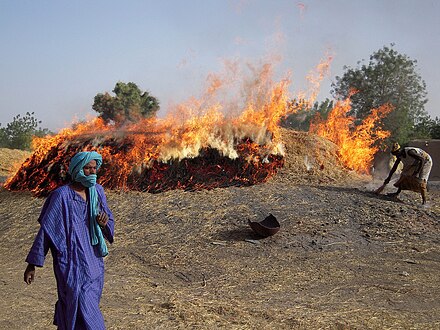

Pit-firing pottery is the oldest method of firing pottery in the world -- and it is still used today in some parts of the world.
The advantages of pit-fired pottery is that it is easy to scale (just need a bigger hole), simple, and straightforward. The disadvantages are that earthenware are more likely to break during pit firing (less stable temperatures), more fuel consumption (not as efficient), and the inability to reach higher temperatures. Notably, pit-firing is unable to reach temperatures necessary to produce many glazes (shiny/smooth/colorful/texture) for pottery.
In OHOL, pit firing can balanced such that up to three pottery items can be fired at once, and consumes two kindling. Later pottery kilns will have increased fuel efficiency over this baseline. There is also a 15% chance that the firing process fails and only broken pottery shards are obtained.
Formula:
1. Shallow Pit + Kindling = Pit Hearth
2. Pit Hearth + Wet Clay Bowl/Plate (up to three) = Pit Hearth with Wet Clay Pottery
3. Pit Hearth with Wet Clay Pottery + Kindling = Filled Pit Kiln
4. Filled Pit Kiln + Firebrand = Firing Pit Kiln + Firebrand
5. Firing Pit Kiln + (Time) = Shallow Pit with Clay Pottery (Successful - 85%)
6. Firing Pit Kiln + (Time) = Shallow Pit with Broken Clay Pottery (Failure - 15%)
7. Shallow Pit with Clay Pottery + (Action) = Clay Bowl/Plate + Shallow Pit with Ashes
#105 Re: Main Forum » Recipe Suggestions Mega-Thread » 2019-05-29 03:10:33
RECIPE 23: Shallow Pit
I was working through the bronze tech tree, and the issue that I realized is that currently in OHOL we skip directly to iron-age-level tech (bloomery furnaces). Iron age furnaces fire at higher temperatures than neolithic/bronze age furnaces were capable of obtaining, and the invention of bloomery furnaces were the critical bottleneck invention that enabled human civilizations to break into the iron age. Consequently, if any form of bronze tech is desired as a step before iron, it's absolutely necessary to work back to the neolithic/bronze age firing techniques.
I did some research on this, and it turns out that in OHOL we have the following historic inaccuracies: (A) open campfires, (B) ceramic ovens/kilns coming first.
In most early civilizations (and even in the medieval era), the preferred form of hearth was the pit-hearth -- in other words, a fire that is built in a pit in the ground. A firepit was preferred in many instances because it was easier to control if you built it inside of a flammable tent/teepee/hut, and furthermore it could double for many useful cooking purposes. It turns out that neolithic/bronze age cooking/baking/smelting was all done in some variant of an earthen pit. There were earth ovens, and pottery was first fired in pit kilns. Early smelting was likely also done in pits -- even if discovered by accident.
All of these methods start with a (shallow) pit, which is the foundational step of this recipe series.
Note that OHOL also has a "Trash Pit" (requiring shovel), but neolithic tech will not work if it depends on steel tech. I searched quite hard for something like a "stone shovel", but that simply didn't exist. Primitive people seem to have worked just fine with digging sticks.
Formula:
1. Pit Stakes + Skewer = Shallow Pit
2. Pit Stakes + Shovel = Shallow Pit
3. Shallow Pit + Bowl of Fertile Soil = Clay Bowl (Pit is destroyed)
4. (For trash pit) Shallow Pit + Shovel = Trash Pit + Shovel
RECIPE 24: Pit Hearth
1. Shallow Pit + Kindling = Pit Hearth
RECIPE 25: Fire Pit
To incentivize the use of Fire Pits (IRL, their advantage is ease of control), Fire Pits should burn longer than open fires.
1. Pit Hearth + Firebrand = Fire Pit + Firebrand
2. Fire Pit + Firewood = Large Fire Pit
3. Fire Pit + (Time) = Pit of Hot Coals
4. Pit of Hot Coals + (Time) = Pit of Ash
5. Pit of Ash + (Time) = Shallow Pit
Just for fun, Fire Pits are actually great from a cooking standpoint because Pit Barbecues are conceptually simple and beautiful. Years ago, I struggled with figuring out how someone might build the platform to support cooking over an open fire. Our imagination might lead us to build something like this (modern man "pretending" to be primitive):

But it turns out... building this elaborate set of supports and stakes is incredibly stupid (lychee is a dummy!) because all along you could have just done this:

And it turns out this pit style of cooking is the prevalent way to cook all through history. A whole host of ethnic foods involve some variant of pit cooking, which I won't go over in detail, but is in great abundance on Google.
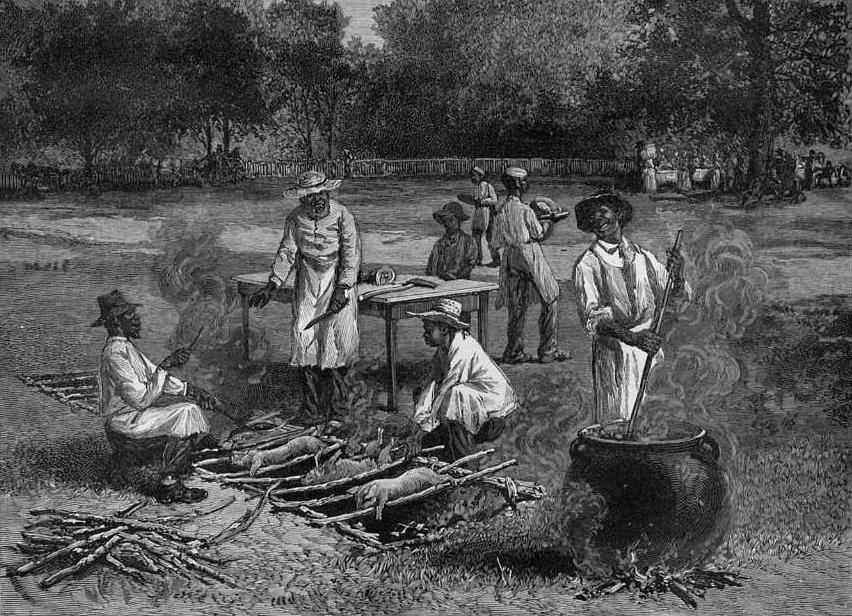
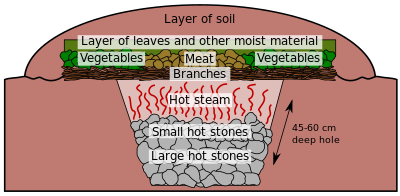
#106 Re: Main Forum » Looking for voice actors for a fan film » 2019-05-29 02:35:24
wbsteve on youtube uses generated voices for his OHOL videos, idk if that's an option for you
#107 Main Forum » Humans Who Make Games with Adam Conover - Jason Rohrer (Podcast) » 2019-05-29 02:03:02
- lychee
- Replies: 2
This is an interview/podcast with Jason posted on Youtube yesterday. Not sure if anyone cares, but here it is!
#108 Main Forum » I’m tired of the constant bickering and murders » 2019-05-28 17:12:04
- lychee
- Replies: 5
I really love this game, and I wish for all the best for it.
But lately my motivation to play is at an all-time low. I’m just not feeling as attached to this game as I used to.
I’m sure everyone could come up with a list of reasons/explanations, but in the end, it’s really only the outcome that matters. Some aspect about the current state of OHOL is missing something that I used to feel in this game.
I don’t feel anything when the everyday mass-murder spills over on my screen. It’s not necessarily the single fault of swords or eves or griefers or close spawns (maybe it’s a mixture of everything) — all I can tell you is that it happens so *so* much now. That’s just my experience. All I feel is just emptiness and detachment.
Are murders supposed to make me feel anything?
When I log onto the forums and see so much hatred/toxicity, all I feel is jaded.
#109 Re: Main Forum » Are there any towns connected by roads? » 2019-05-28 04:40:11
Towns don't live long enough, imo. That's the main reason, I think.
If lines went a bit longer, people might have the time/energy to build mega-roads, but right now everything just seems abandoned.
The bloodbaths do not help. I feel like I see a lot of them (and soon after one happens, a town ties), and sometimes there's just a ton of misunderstandings that people don't bother to clarify. In Twisted's video from a few days ago (https://www.youtube.com/watch?v=m-tw5_mJGa8), he was ecstatic to kill a griefer eve -- but it turned out he was entirely mistaken and intimidated/killed an entirely innocent person instead.
And I think this sort of thing is really common. The kill chain propagates like that often.
#110 Re: Main Forum » Recipe Suggestions Mega-Thread » 2019-05-28 00:26:11
RECIPE 22: Tin Ore (Cassiterite) Mine
Tin is an essential component for the production of bronze, however it is a rare mineral on Earth (25X less abundant than copper, and 1800X less abundant than iron). In fact, tin deposits were so rare that tin trade was a characteristic and critical feature of Bronze Age trading economy. Nations that controlled tin were powerful by nature (having access to bronze), and few nations had that access. Phoneticians were notable for trading tin all over the mediterranean. Tin was so rare that archaeologists have little evidence for how tin was mined/produced/smelted.

At Earth's surface, tin is present only as Tin Oxide (Casserite), which is a black and heavy ore. Unlike copper ore (green) or iron (red), tin is not particularly easy to identify. Very few tin mines were present in antiquity (some researchers have speculated that the amount of tin present in Cornish/other mines simply couldn't have produced enough tin for the entire bronze economy). It is speculated that much tin "mining" was done instead by "placer mining" (similar to panning for gold) in river beds.
Since OHOL lacks rivers, for the time being, conventional tin mines will have to take their place.
Formula -
1. Casserite Vein + Bronze Pick (or any tech pick) = Casserite + Bronze Pick (-1) + Casserite Vein (-1)
2. Casserite Vein (last use) + Bronze Pick = Casserite Pit + Bronze Pick (-1)
3. Casserite Pit + Stanchion Kit = Casserite Mine
4. Casserite Mine + (Action) = Casserite + Casserite Mine (-1)
#111 Re: Main Forum » Recipe Suggestions Mega-Thread » 2019-05-27 23:57:35
RECIPE 21: Stone Axe (Celt)

The Celt is a primitive stone axe.
I wavered a little on whether to include it, but decided that having an axe in the stone age is an important quality-of-life feature. We already have a stone hoe, and there is evidence of stone-age axes. The difference between a stone axe and an iron one is durability -- stone ones break more easily.
The procedure for making a Stone Axe (Celt) actually involves using hard groundstone. These rocks are not made with flintknapping as other stone age tools (a concussion implement like an axe would break too easily), so the sharpening of these tools is feasible only by grinding. Consequently, a celt is far more durable than a typical stone age handaxe or other implement.
Formula:
1. Flat Rock + Bowl of Water = Wet Flat Rock + Clay Bowl
2. Wet Flat Rock + Sharp Stone = Stone Axe Head + Flat Rock
3. Long Straight Shaft + Flint-Tipped Bow Drill = Long Straight Shaft with Single Bore
4. Long Straight Shaft with Single Bore + Fire = Hardened Long Straight Shaft with Single Bore
5. Stone Axe Head + Hardened Long Straight Shaft with Single Bore = Unfixed Stone Axe
6. Unfixed Stone Axe + Rope = Stone Axe
#112 Re: Main Forum » Recipe Suggestions Mega-Thread » 2019-05-27 23:42:12
RECIPE 20: Copper Ore (Malachite) Mine
Copper was one of first ores that humans learned to smelt. A number of copper ores are prevalent, but malachite (already in the game) was most famous -- in part because it could be found in limestone deposits (softer stone) that could be mined easily with primitive technology.
In this series, I push for bronze tech as a step before iron/steel, lengthening the tech tree overall. Consequently, a copper mine is necessary to fulfill the role of an iron mine in the copper age.
Formula -
1. Malachite Vein + Bronze Pick (or any tech pick) = Malachite + Bronze Pick (-1) + Malachite Vein (-1)
2. Malachite Vein (last use) + Bronze Pick = Malachite Pit + Bronze Pick (-1)
3. Malachite Pit + Stanchion Kit = Malachite Mine
4. Malachite Mine + (Action) = Malachite + Malachite Mine (-1)
#113 Re: Main Forum » Recipe Suggestions Mega-Thread » 2019-05-27 17:02:40
Note: Limestone should be fired in a regular kiln, not a forge.
The temperature required to fire lime (900C) is lower than that required to fire pottery. There’s absolutely no reason to require a forge with bellows.
#114 Re: Main Forum » Recipe Suggestions Mega-Thread » 2019-05-27 16:36:59
In theory, technically all forms of animal skins needed to be "tanned" before they are made into clothes. Without a tanning treatment, animal hides literally rot, which means they decompose very quickly. Paleolithic humans discovered tanning very early -- and there are many methods to tan animal skins. Even if you see nice luxurious rabbit furs/pelts, etc, they have been tanned (although only on one side).
For the purposes of OHOL, tanning extends the shelf life of animal skins before they decay. Conversely, for balance, the shelf life of untreated animal skins should be nerfed.
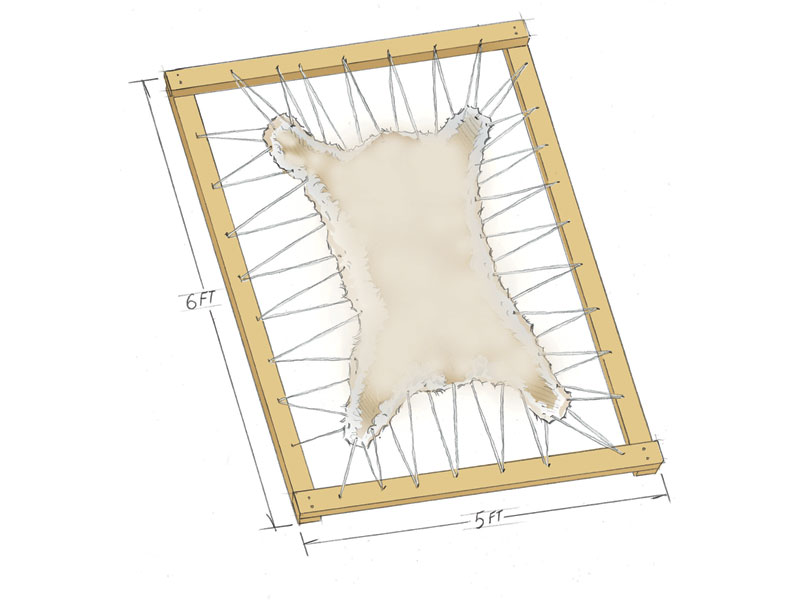
RECIPE 16: RAWHIDE (SMALL/LARGE)
Rawhide is the term for animal skins that have not received tanning treatment, but has been preprocessed with scraping. When rawhide dries, it is actually very stiff and hard (used in things like drums) -- tanning is necessary to soften the hide.
In OHOL, I think it's reasonable to classify animal skins/pelts as either small (rabbit skin) or large (wolf skin, bear skin).
Formula:
1. Animal Skin + Pond = Soaking Animal Skin in Pond
2. Soaking Animal Skin in Pond + (Action) = Soaked Animal Skin + Pond
2. Soaked Animal Skin + Bowl of Slaked Lime = Limed Animal Skin + Clay Bowl
3. Limed Animal Skin + Wooden Frame = Stretched Animal Skin
4. Stretched Animal Skin + Flint Chip = Stretched Rawhide
RECIPE 17: FAT SOLUTION
One of the oldest methods to tan a hide was to use brains. Brains contain an oil that is very good for tanning. Various Native American cultures used this method. For OHOL's purposes, I think it's reasonable to approximate this as "Fat Tanning Solution".
Formula:
1. Raw Meat (e.g. mutton, rabbit) + Bowl of Water = Bowl with Raw Meat and Water
2. Bowl with Raw Meat and Water + Sharp Stone = Bowl with Mashed Raw Meat and Water + Sharp Stone
3. Bowl with Mashed Raw Meat and Water + Hot Coals = Simmering Bowl of Fat Solution
4. Simmering Bowl of Fat Solution + (time) = Bowl of Fat Solution
RECIPE 18: TANNIN
Tannin is a vegetable-based tanning agent. It was used predominantly in the 1700s/1800s Europe (and is incidentally where the term "tanning") comes from. Tannin is make from the bark of the oak tree (among other trees). OHOL lacks an oak tree (but tbh I'm going to assume that an oak tree is added -- oak is useful for lots of things! Why don't we have cedar trees?).
Hides tanned with tannin are stiffer and harder than other tanning methods.
Formula:
1. Oak Tree + Sharp Stone = Oak Tree + Oak Tree Bark + Sharp Stone
2. Oak Tree Bark + Clay Bowl = Bowl of Oak Tree Bark
2. Bowl of Water + Bowl of Oak Tree Bark = Bowl of Soaking Oak Tree Bark + Clay Bowl
3. Bowl of Soaking Oak Tree Bark + Hot Coals = Bowl of Simmering Oak Tree Bark
4. Bowl of Simmering Oak Tree Bark + (Time) = Bowl of Tannin
RECIPE 19: LEATHER (SMALL/LARGE)
Seems reasonable to divide leather up into small/large based on the starting material. Rabbits make small leather and large animals make large leather.
Formula:
1. Stretched Rawhide (still on frame) + Bowl of Tannin = Tanning Rawhide + Clay Bowl
2. Stretched Rawhide (still on frame) + Bowl of Fat Solution = Tanning Rawhide + Clay Bowl
3. Tanning Rawhide + (time) = Stretched Leather
4. Stretch Leather + (action) = Leather + Wooden Frame
#115 Re: Main Forum » Recipe Suggestions Mega-Thread » 2019-05-27 15:42:24
RECIPE 15: SINEW
Animal sinew is one of the oldest forms of cordage used by primitive humans. It is also one of the strongest natural fibers in the world (stronger than most plant fibers -- limited only by the quantity that is reasonable to produce IRL). Sinew stretches when wet and contracts when dry. Sinew should be worked with when wet.
Recipe has been balanced relative to milkweed. Ideally, multiple forms of skinned large animals (sheep, wolf, bear, boar, mouflon) should feed into this recipe.
Formula -
1. Skinned Large Animal + Flint Chip = Fresh Sinew + Skinned Large Animal without Sinew
2. Fresh Sinew + (Time) = Dried Sinew
3. Dried Sinew + Round Stone = Processed Sinew + Round stone
4. Processed Sinew + Bowl of Water = Wet Sinew + Clay Bowl
5. Wet Sinew + Wet Sinew = Thread
#116 Re: Main Forum » Controversial: Enslaving other families. » 2019-05-27 03:31:37
Not only is it toxic, but it has the potential to be bad for PR.
There’s tons of products that have been destroyed by bad publicity, so I would absolutely not call this a good idea for a game that currently markets itself as a “parenting” game.
#117 Re: Main Forum » Recipe Suggestions Mega-Thread » 2019-05-26 21:34:45
RECIPE 14: SPEAR
Implementation of a spear could be such that stabbing a bear has greater risks (could still be mauled), and there is a slowdown/cooldown between stabs. Aside from this, spears were the classic implement for hunting boars in the medieval era (although it was risky).
Formula:
1. Long Straight Shaft + Rope = Tied Long Shaft
2. Tied Long Shaft + Flint Arrowhead = Stone Spear
#118 Re: Main Forum » Recipe Suggestions Mega-Thread » 2019-05-26 15:43:43
RECIPE 13: WILD YAM
Tubers and yams were a major part of the human paleolithic/hunter-gatherer diet. Yams are vine plants and they can also get enormous. Very starchy and nutritious. Traditionally they were dug up with digging sticks, but shovels will work. As a side note, it should be possible to dig up potatoes with a digging stick too (they are part of the tuber family).
Yam tubers vary in size from that of a small potato to over 60 g (2.1 oz). Some 870 species of yams are known,[1] and 95% of these crops are grown in Africa.[9]
Yam tubers can grow up to 15 m (49 ft) in length and 7.6 to 15.2 cm (3.0 to 6.0 in) high.[1] The tuber may grow into the soil up to 1.5 metres (4.9 ft) deep.[1] The plant disperses by seed.[1]
Formula:
1. Wild Yam + Skewer = Wild Yam (dug out) + Skewer
2. Wild Yam + Shovel = Wild Yam (dug out) + Shovel
3. Wild Yam + Coals = Cooked Wild Yam (3/3 uses)
4. Wild Yam + Hot Adobe Oven = Baked Wild Yam (3/3 uses)
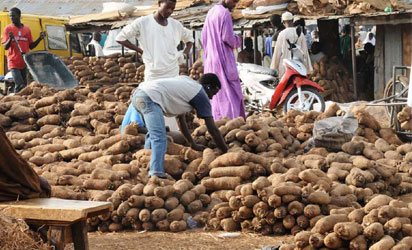
#119 Re: Main Forum » Ideas to start in-game trade » 2019-05-26 15:21:41
I think this is a reasonable idea for kickstarting trade, although I'm not sure how much jason would like it since a vending-machine store is a bit magical/anachronistic.
That said, I do think this is a great thing to discuss because one barrier to trade in OHOL is that it's simply just too inconvenient. It can take a good 5 minutes to have a bartering conversation with someone, which is a pretty substantial fraction of your life. Ordinarily these kinds of conversations just don't happen. Normally conversations are more about "can I borrow your knife" type discussions.
With regards to kitty's suggestion, the currency needs a backing (like someone needs to control the "printing" of money), or else there will be crazy inflation to the market. I personally think the easiest currency in OHOL is a pip -- for instance a pipnote. Deposit food to get a pipnote equal to the food value of the food item. A rabbit pie is 14 pipnotes. Players could set the exchange rate for non-food items.
#120 Re: Main Forum » Let's talk about communication and human relations » 2019-05-26 15:07:58
I am interested too!
Music/art/ritual tech plays a big role in history, and they are strongly underreppresented in the current game. It would be cool if there were reasons or incentives to do these things. A few ideas have been tossed --
A) Fertility rituals (make an altar for a small fertility boost)
B) Songs can be used to transfer knowledge/teaching
C) Stone engravings/chisels are a more lasting form of recording something
#121 Re: Main Forum » Recipe Suggestions Mega-Thread » 2019-05-26 05:41:12
Wow lychee. You've put a lot of effort into this thread. How do you think these suggestions would affect the difficulty of the game?
Hmm, assessing difficulty is hard without seeing the full tech tree in front of you.
For me personally, I think the game is more interesting with multiple parallel paths up the tech tree (e.g. more than one way to make a basket -- e.g. straw or reeds) and more depth added to flesh out the tech tree, particularly in the mid game before diesel tech. Also, there are major historical Earth industries (e.g. cotton, coal, bronze, nautical) that are glaringly missing from OHOL, and I think anyone is bound to wonder why they aren't in the game.
From a game design perspective, it is important for each tier of technology (e.g. skewer, stone hoe, plough, steel plow, tractor) to have noticeable improvements over the previous tier. However, the deeper I flesh out the tree -- the more I am starting to realize that there aren't very strong reasons to improve on older tech in the current game design. For instance, a steel hoe is already a great tool in OHOL, since all farming tools work instantaneously. Why would someone bother making a tractor for farming? Why should someone make nylon rope if they already have milkweed rope?
I think Jason discovered this problem with water -- a few months ago, nobody was teching to diesel wells because the mid-level water tech was already great (and gave infinite water). Consequently, in some circumstances, it may be appropriate to nerf current technology to make room for the relative tech advancement (making the game harder).
In the mean time, I do hope that adding multiple parallel paths would make the game easier too. At the very least, I hope there can at least be some ambiguity with regards to "only one way to play the game" monotonous meta gameplay (e.g. find green biome, swamps, rush sheep, compost, and diesel).
It is really a delicate balance in the end, and it is worthwhile for people to discuss whether certain additions are balanced in terms of gameplay or not. For me personally, it is a pipe dream that one day every major technology in the history of Earth will be represented in some way in OHOL. My personal gut instinct would be to balance the game according to how it is on Earth (e.g. mass berry farm to sustain a nuclear-powered civilization doesn't make any sense on Earth, so maybe OHOL shouldn't be that way either) -- however, it's really up to Jason to decide how he wants the game to be and shape the game in the way he thinks is best.
#122 Re: Main Forum » Recipe Suggestions Mega-Thread » 2019-05-26 03:20:22
RECIPE 9: OXEN
Oxen are some of the earliest animals domesticated by human beings -- and they were especially critical in agriculture for ploughing fields. In this recipe series, I propose a system for implementing oxen and animal ploughing.
For simplicity, let's say a fed Domestic Bison has a 50% chance of producing an ox (male) and 50% chance of producing a cow (female).
RECIPE 10: YOKE
A yoke is a generic attachment used to attach a pair of oxen to some tool extension. The tool extension can be variable, but is classically exemplified by something like a plough or cart.
Formula:
1. Long Straight Shaft + Flint-tipped Bow Drill = Long Straight Shaft with Single Bore + Flint-tipped Bow Drill
2. Long Straight Shaft with Single Bore + Flint-tipped Bow Drill = Long Straight Shaft with Double Bore + Flint-tipped Bow Drill
3. Long Straight Shaft with Double Bore + Rope = Long Straight Shaft with Double Bore and Rope
4. Long Straight Shaft with Double Bore and Rope + Rope = Yoke

RECIPE 11: Yoked Pair of Oxen
1. Yoke + Domestic Ox = Yoke with Single Ox
2. Yoke with Single Ox + Domestic Ox = Yoked Pair of Oxen
RECIPE 12: Wooden Ard

The wooden ard was the earliest form of plough, employed extensively by the Egyptians and Vikings. The ard can also be witnessed in many modern primitive/poor cultures -- for instance, in Ethiopia. Ploughs were critical for human agricultural revolution, and most major ancient civilizations/cultures/farmers employed them. Large-scale farming with digging sticks or hoes was not practical or economical in most circumstances.
Ploughs provided two benefits to human civilization. (A) Faster, easier ploughing. The original definition of an "acre" was the amount of land that a single man could plough in a day with an ox/horse. Compare this with the amount of land that could be ploughed using a stick or hoe -- there's no contest -- ploughing with animals was superior in every way. Consequently, even the poorest peasants in Europe ploughed with livestock rather than by hand. (B) Ability to cultivate tougher soil. Ploughs are able to penetrate harder soils than hoes/sticks. In Ancient Egypt, hoeing the ground was only viable in the softest loams/soils. The advent of the wooden ard allowed the ploughing of thicker soils. The later development of heavy plows (iron/steel) enabled the farming of tough soil like those in Northern Europe. In summary, ploughs allowed humans to extend their agricultural range beyond the softest soils.
Implementing these benefits are rather difficult in OHOL, especially since hoe-tilling is instantaneous and has no time cost. Rather, the main cost of farming is iron (when a hoe breaks) or rope (when a stone hoe breaks). If the goal is to make plough-farming superior than hoe-tilling, some artificial benefit most be created for ploughs.
Proposed benefits of ploughs:
1. Using an oxen-driven plough would be like riding a horse-drawn cart.
2. Everywhere the ox-team is driven, it ploughs the ground (provided soil is laid out already).
3. A wooden plough should cost less rope (or last longer) than a stone hoe, and an iron/steel plough should cost less (or last longer) than a steel hoe.
4. A plough "use" is only calculated when a player mounts/rides the ox team. Consequently, ploughing 10 adjacent tiles with an ox team without dismounting is equivalent to 1 use with a steel hoe.
5. When a plough breaks, only the attachment breaks (not the yoke).
Formula:
1. Long Straight Shaft + Flint-tipped Bow Drill = Long Straight Shaft with Single Bore + Flint-tipped Bow Drill
2. Small Curved Shaft + Fire = Hardened Small Curve Shaft
3. Long Straight Shaft with Single Bore + Hardened Small Curve Shaft = Wooden Ard
4. Wooden Ard + Yoked Pair of Oxen = Yoked Pair of Oxen with Ard
5. Yoked Pair of Oxen with Ard + (Action) = (Ride/Plough/Drive)
#123 Re: Main Forum » What if you stayed with one family until that family died out? » 2019-05-25 22:31:47
For me personally, I don’t think that players should spawn to anyone they knew in their previous life. That level of continuity just seems a little too close.
If it were great grandchildren/etc, this would ensure that it feels like the village feels somewhat remote — not like constantly respawning in the same place immediately.
#124 Re: Main Forum » Recipe Suggestions Mega-Thread » 2019-05-25 14:19:00
RECIPE 6: FLAX
Flax is one the most famous ancient fiber plants, used to make rope, linen, and linseed oil. It was used by Ancient Egyptians, Sumerians, and was the most common textile in Europe for thousands of years (Linen!). It makes sense to have it, if you want anything linen (clothes, canvas, sails)!
Flax grows, flowers, seeds, should be harvested when it starts to turn yellow.
The procedure for harvesting flax has multiple steps (similar to wheat), but given the simplifications in OHOL, it seems that many steps could be skipped or switched to stay consistent with other plant products in OHOL.
I'll start with the realistic description: First, flax is pulled by hand to harvest (no need for sickle). It is laid out to dry (2-3 days), and then threshed to remove the seeds (similar to wheat). Next the straw is retted by soaking it in water (e.g. pond/river -- in theory you have to do this with milkweed too). After retting, the flax fibers are separated from the stalks by beating it and combing away the straw debris. This flax fiber can then be spun (on drop spindle or spinning wheel) into thread (also potentially into rope). Note that flax is 2-3x stronger than cotton and European did use flax as their bowstrings.
Formula (adjusted):
1. Flax Plant (fully grown) + (action) = Flax Sheaf + Hardened Row
2. Flax Sheaf + Curved Branch = Flax Straw + Flax Seeds + Curved Branch
3. Flax Straw + Pond + (time) = Retted Flax Straw + Pond
4. Retted Flax Straw + Round Stone = Flax Fibers + Round Stone
RECIPE 7: FLAX THREAD AND ROPE
1. Flax Fibers + Drop Spindle = Flax Thread
2. Flax Thread + Flax Thread = Rope
3. (Linen making process)
RECIPE 8: LINSEED OIL
Linseed oil is most famous for its use as a paint binder (make oil paint using pigments). It is also used to varnish wood, preserving it and extending its shelf life. It is also edible. Traditionally, linseed oil is cold-pressed.
In OHOL, we lack a seed/oil press device (traditional ones use very large stones driven by animals -- not very feasible to do this by hand) (renaissance/pre-modern ones used a screw press). I'll leave out the design for an oil press for now, but it would be worthwhile to consider it at some point.
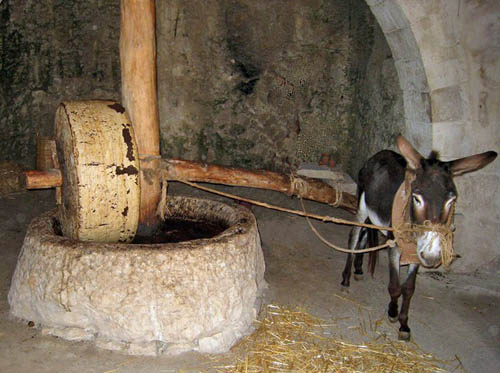
#125 Re: Main Forum » Other games solve a lot of these long-term problems with regular wipes » 2019-05-25 13:33:53
I also like the idea of reclamation if nobody is around for a while.
Eco system is my favorite one, but I know that one is most challenging.
If it's too resource intensive to put an eco system simulator on the main server process, I wonder if it would be fine to just write a second server process to act as "nature" engine. It doesn't have to run in the main game loop (doesn't have to be synchronous) -- maybe can occasionally loop through the game object database and spawn a few extra ones according to several conditions (e.g. nobody around for 200+ tiles), span new maple trees near maple trees, etc.